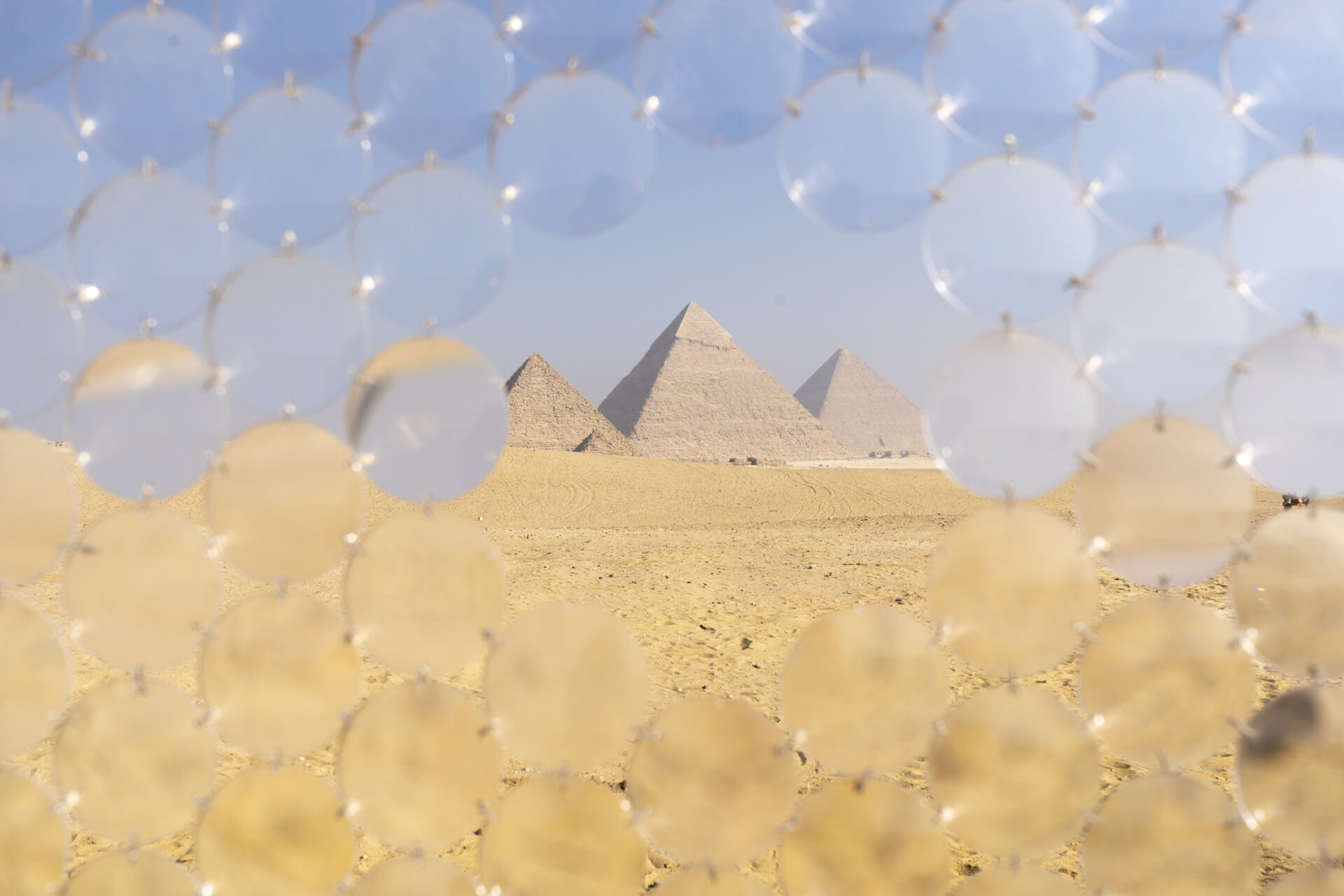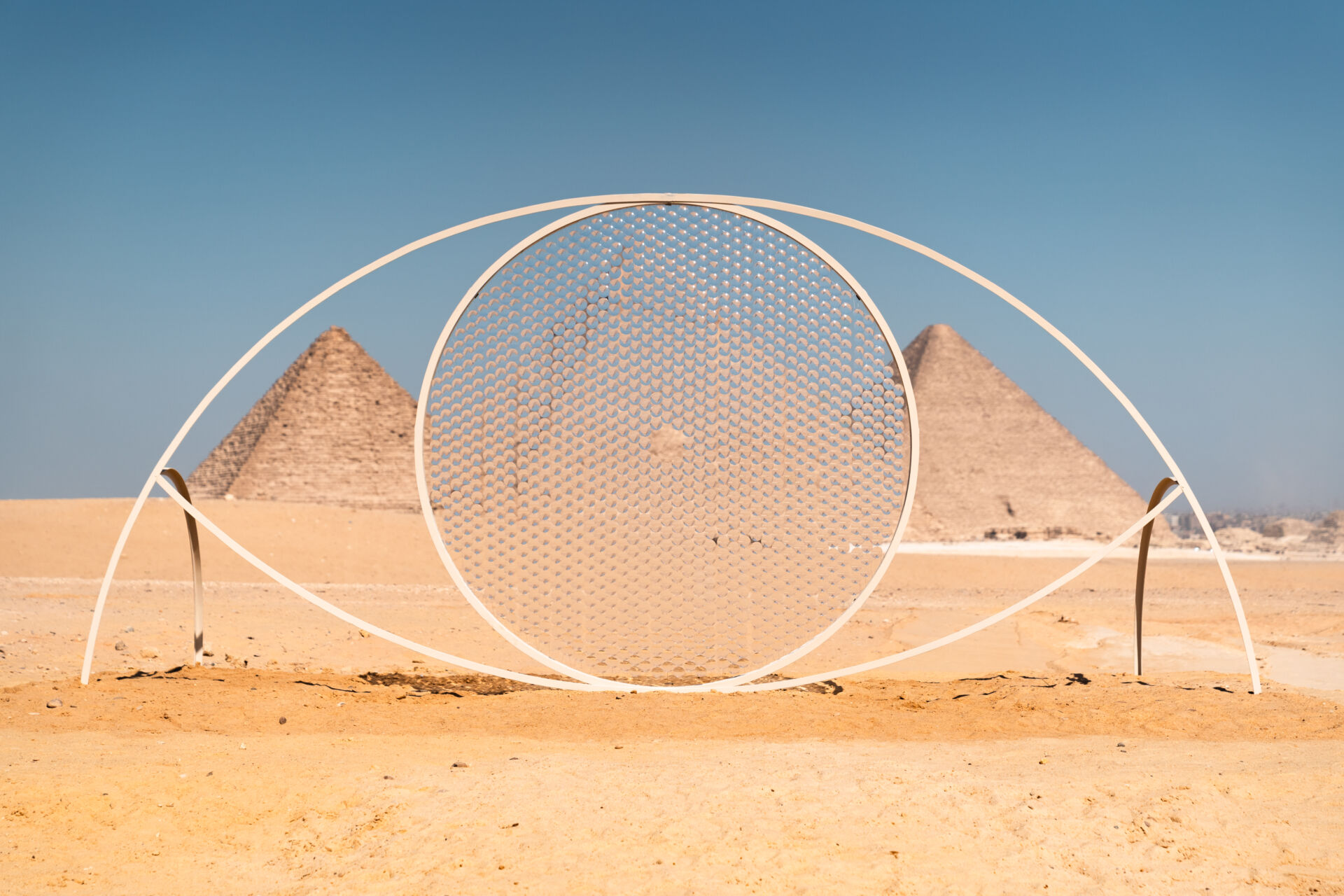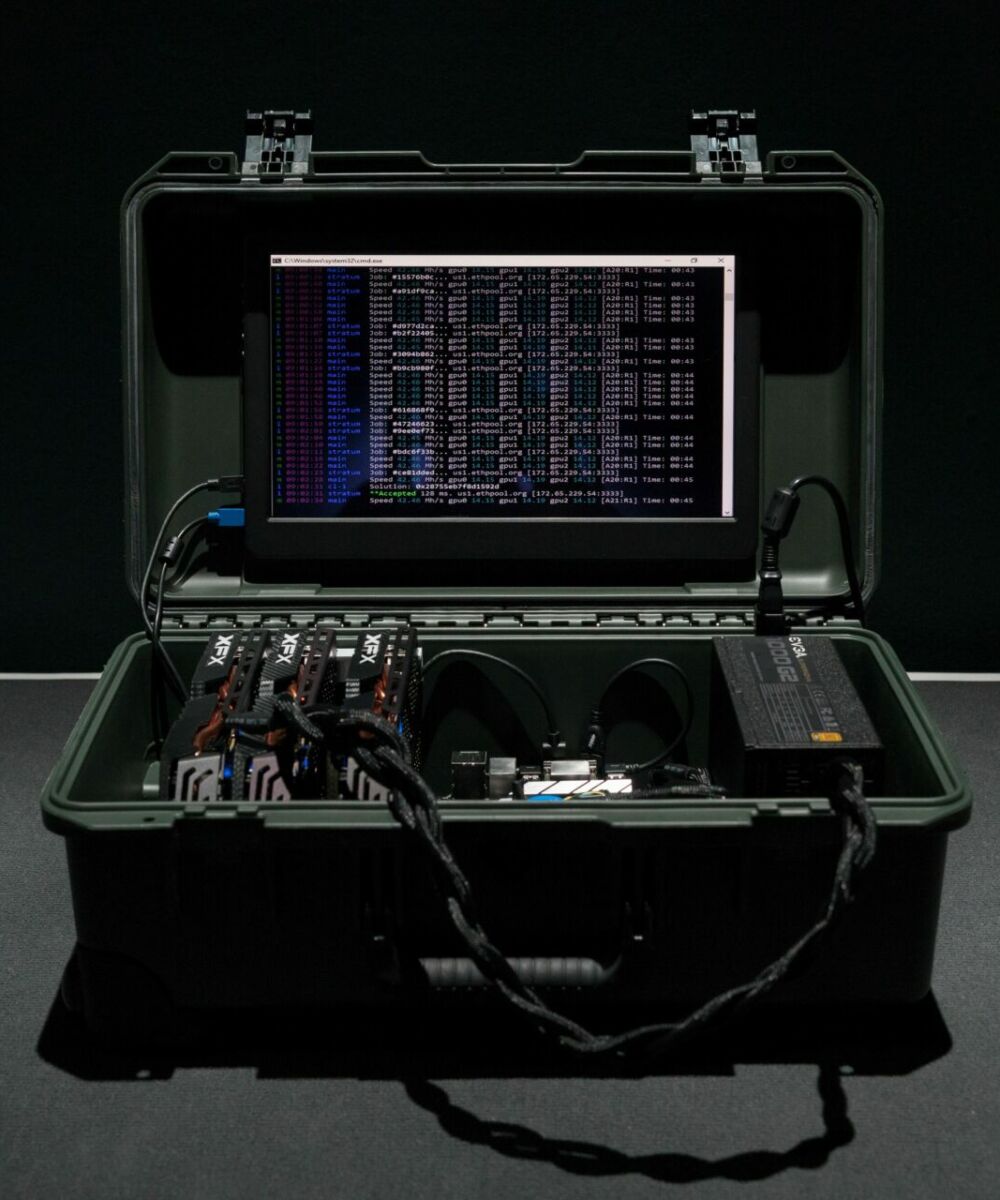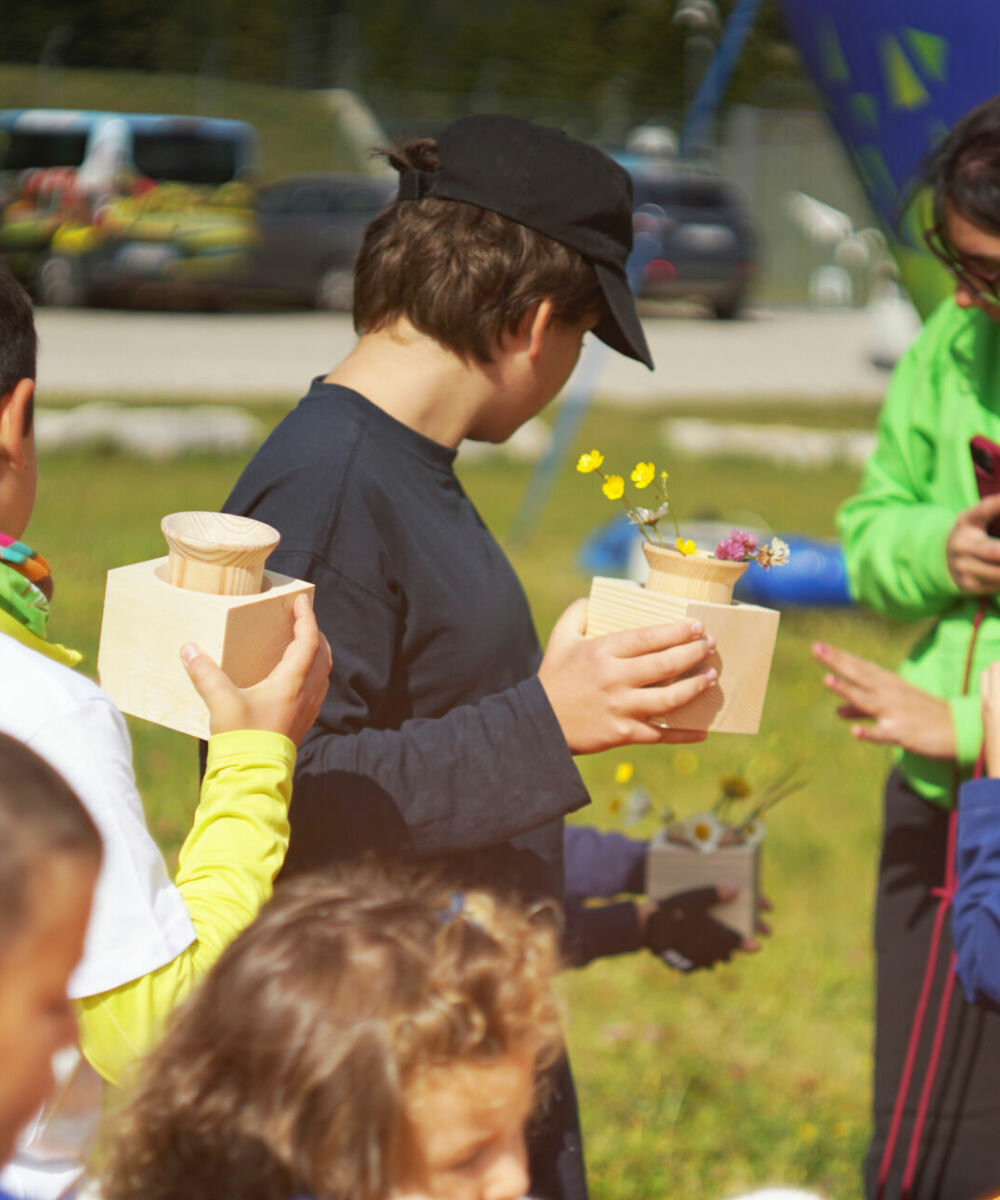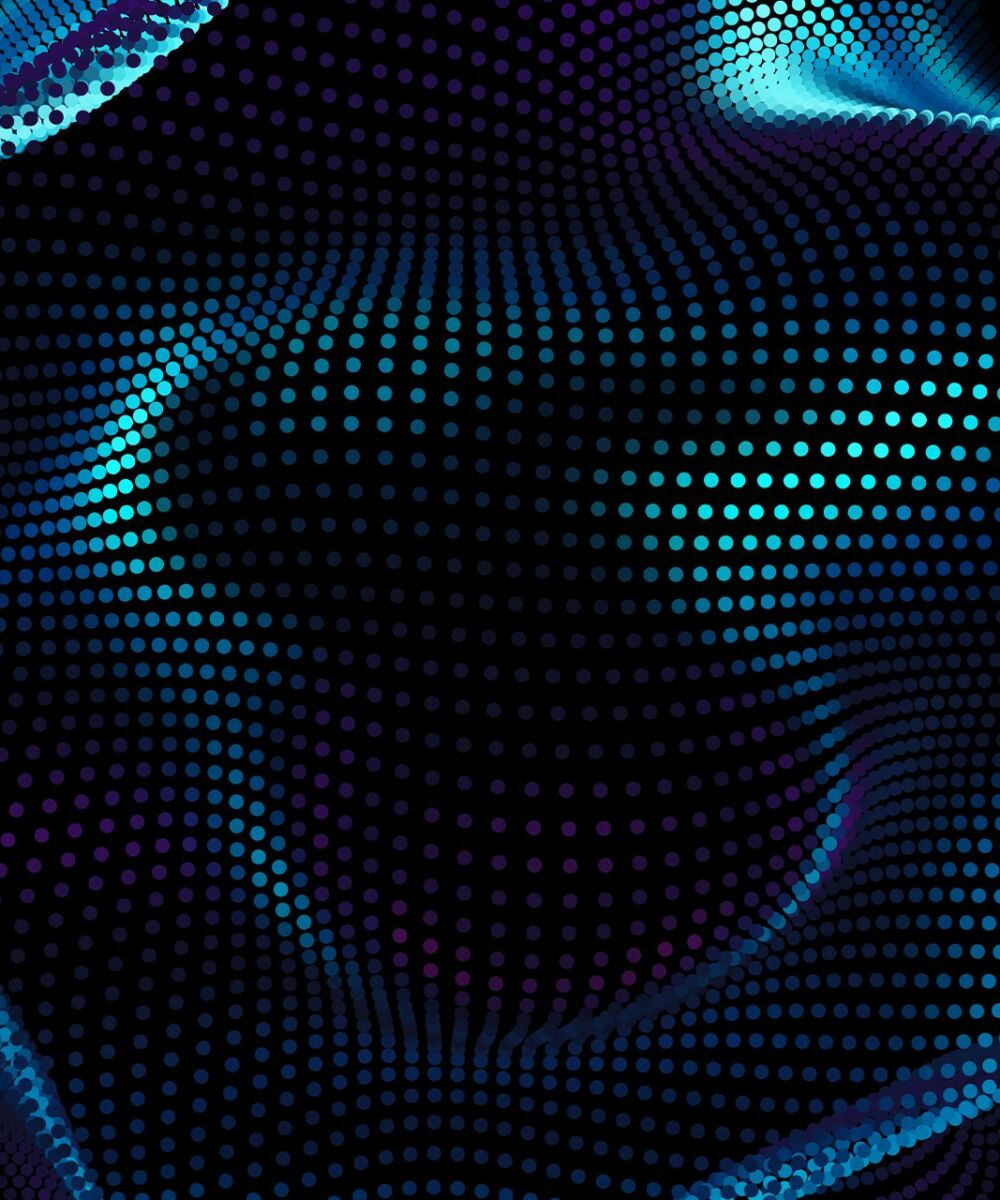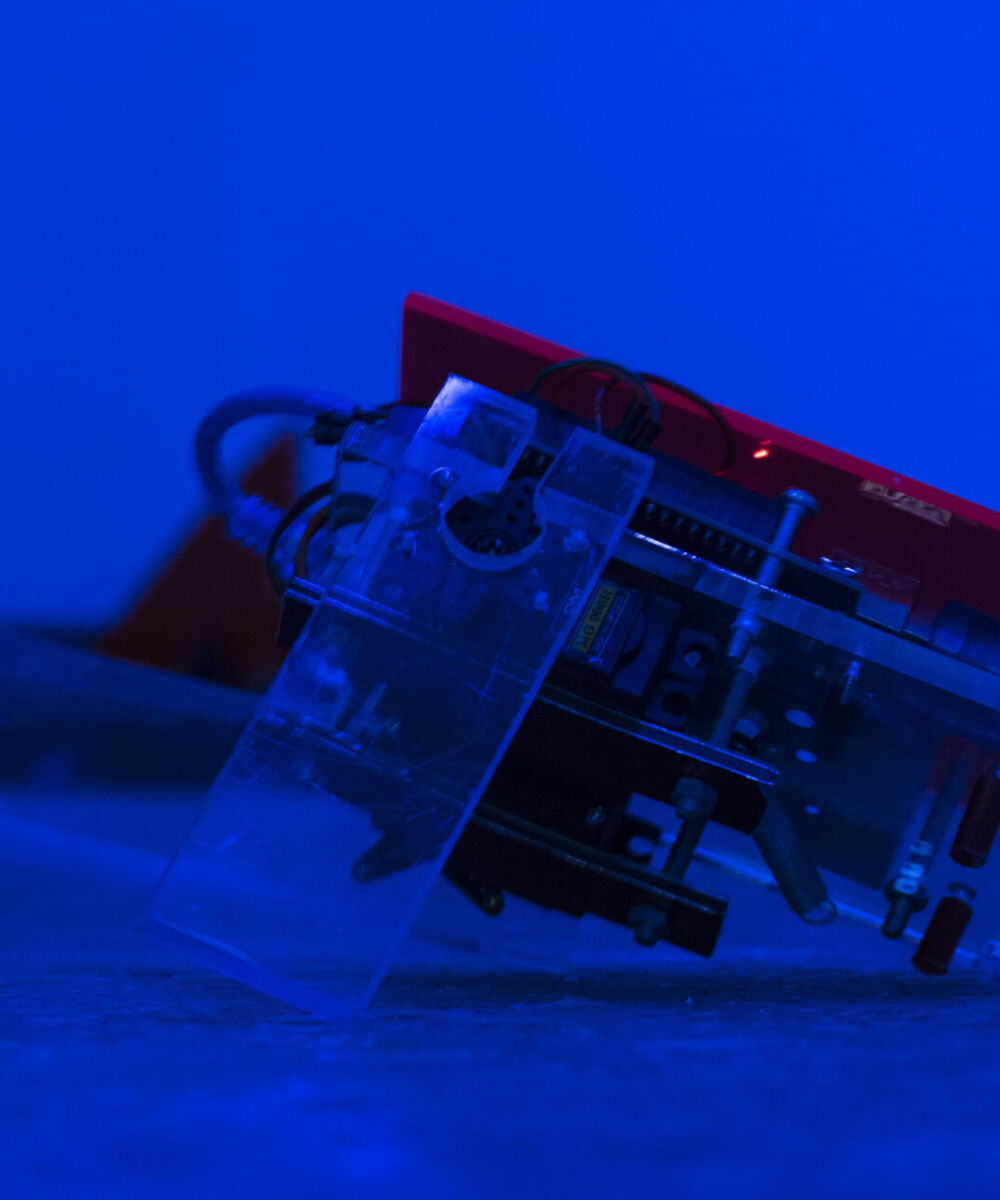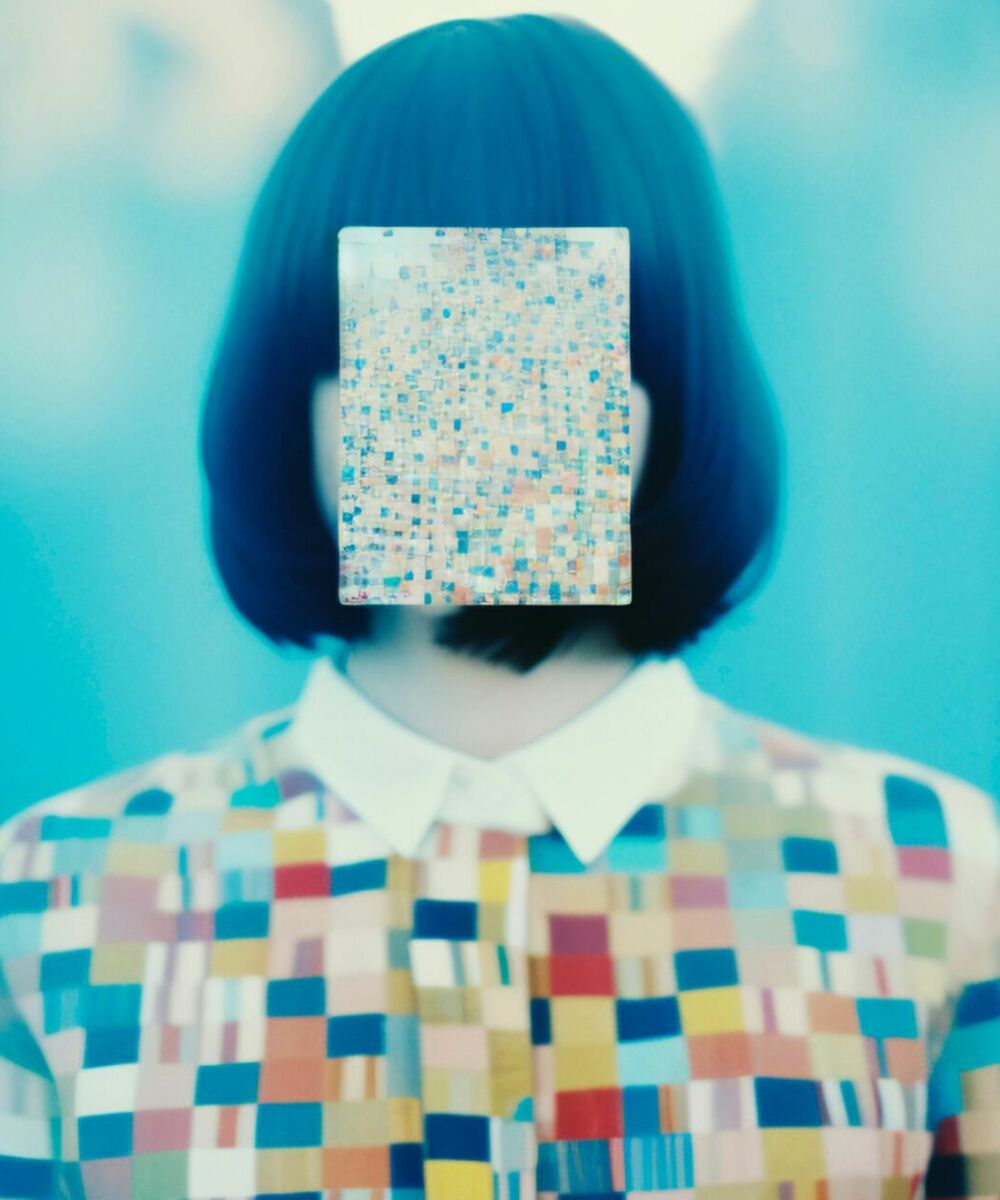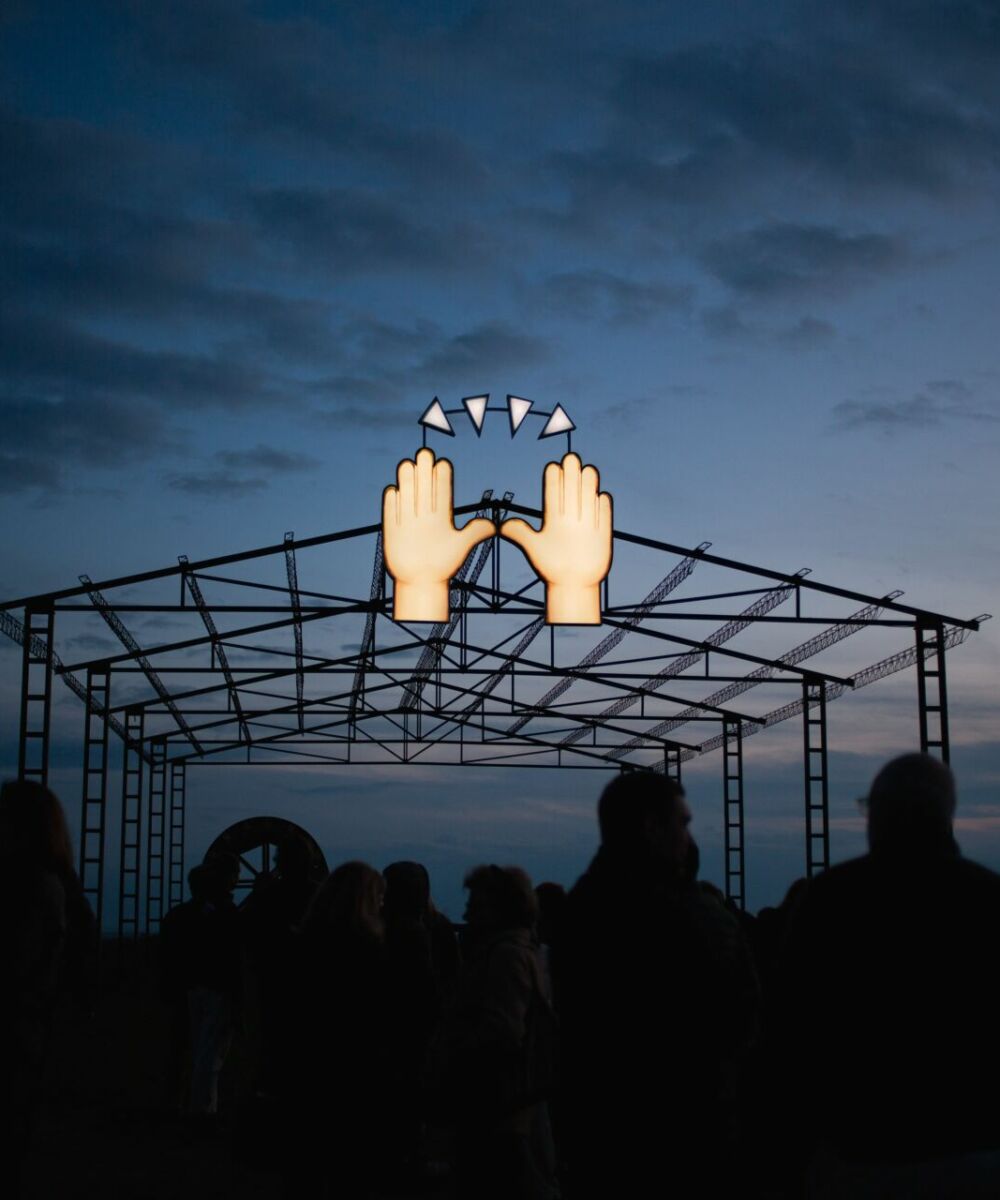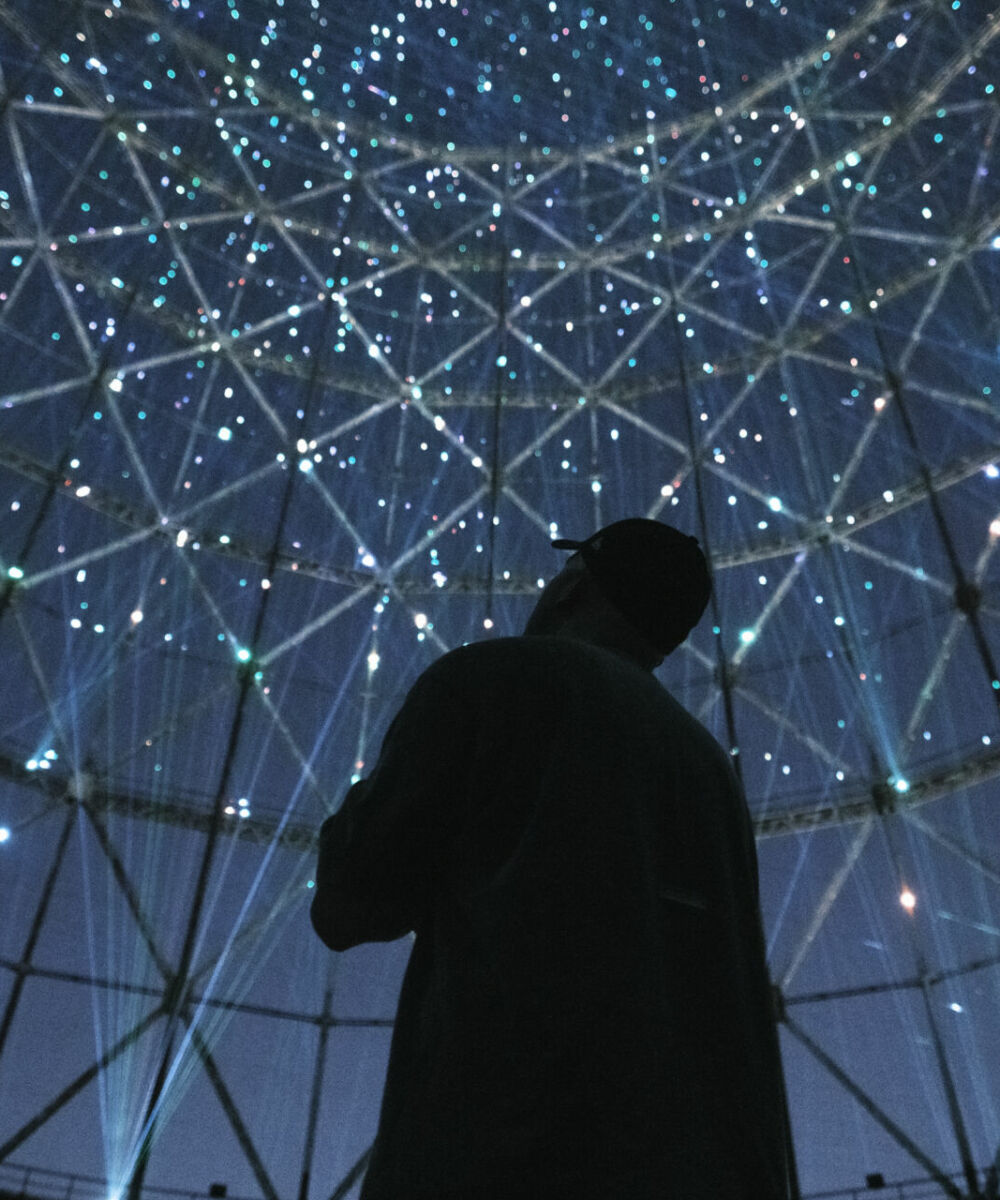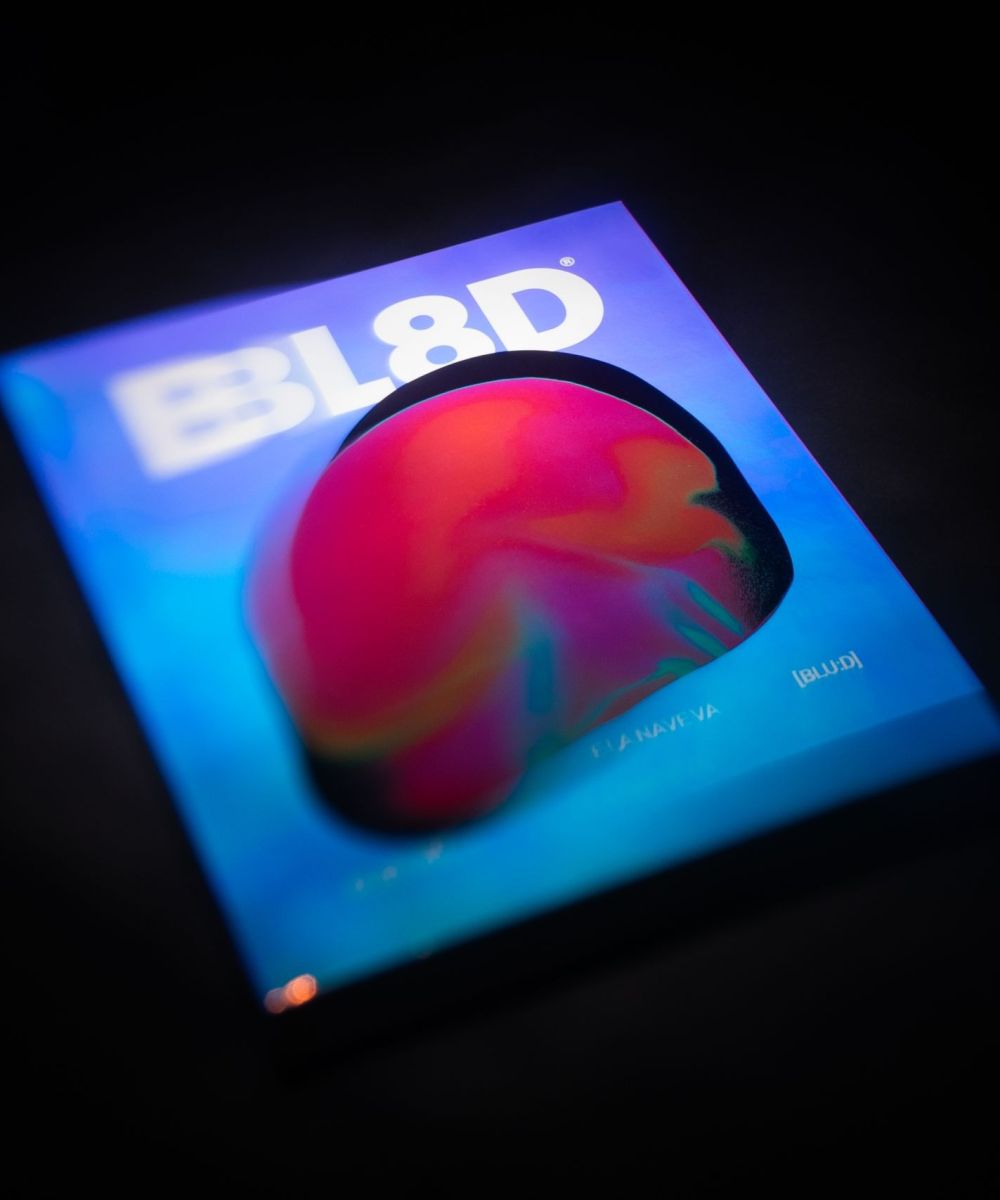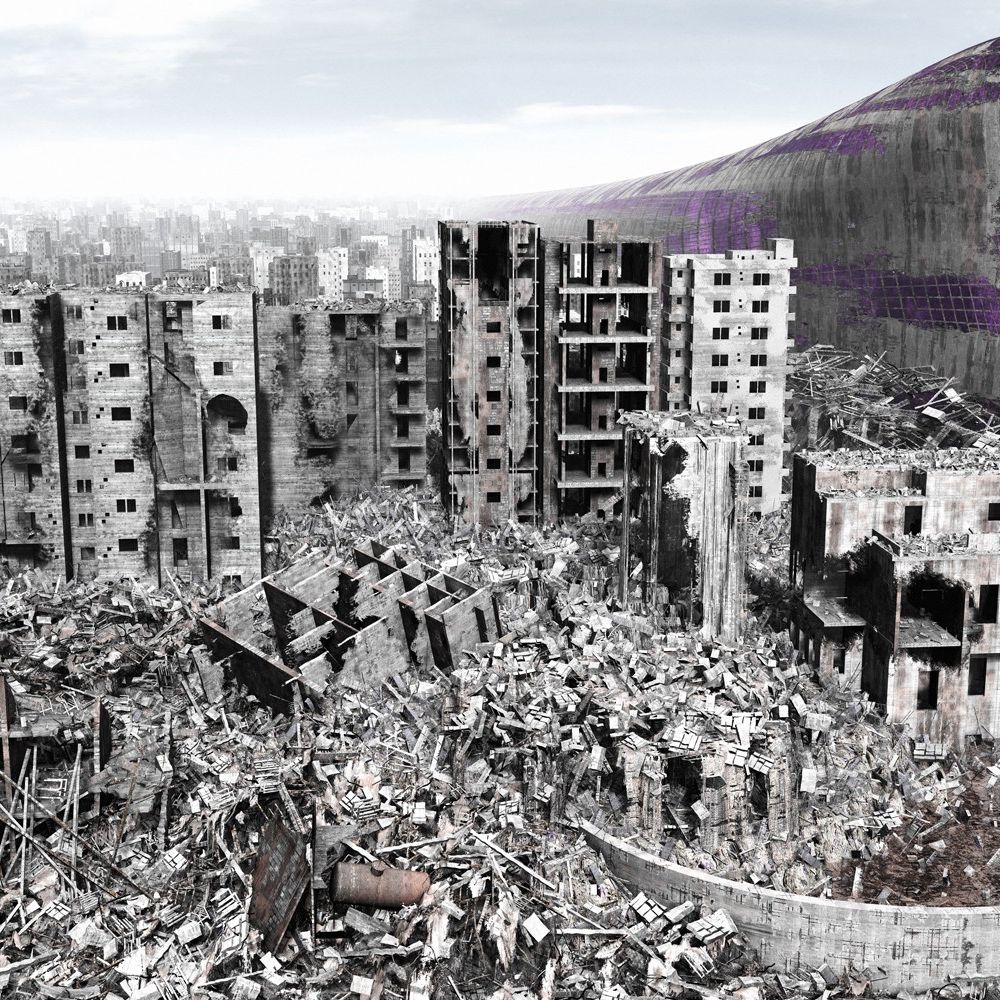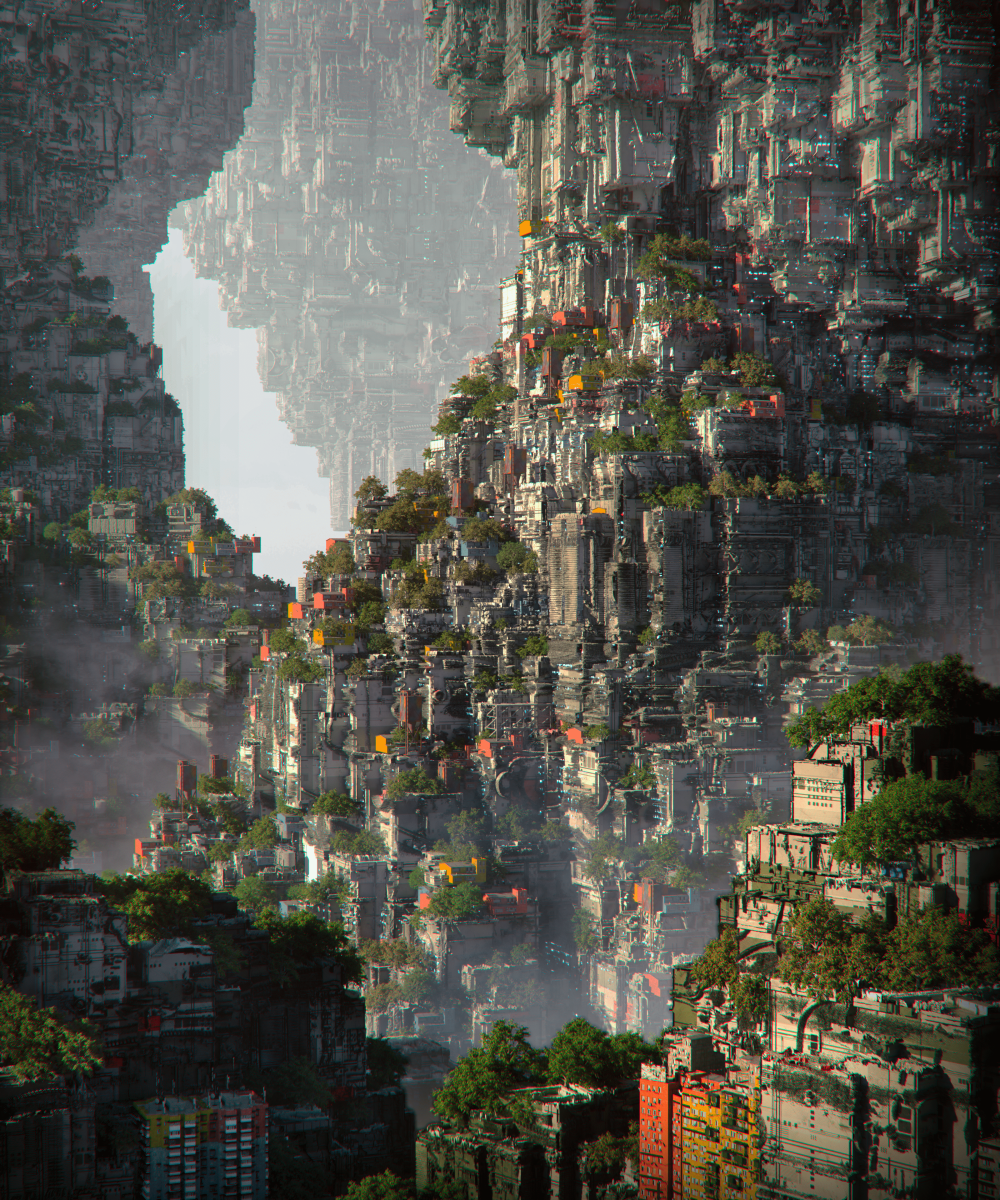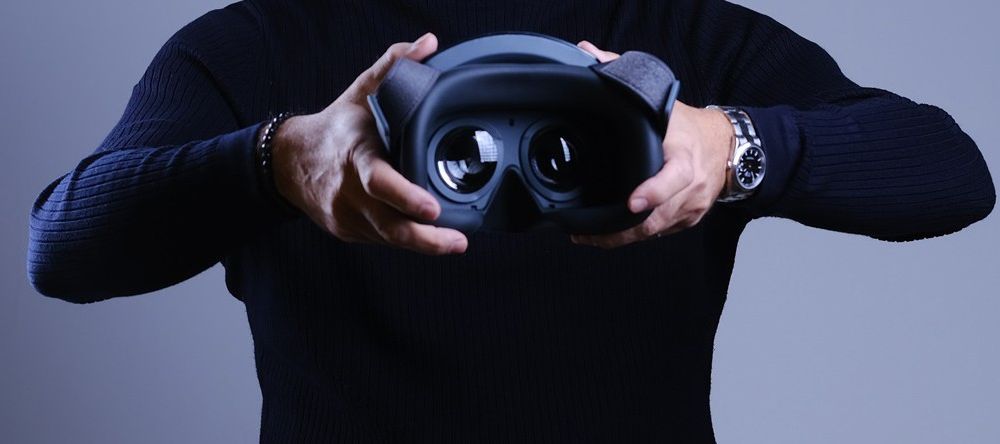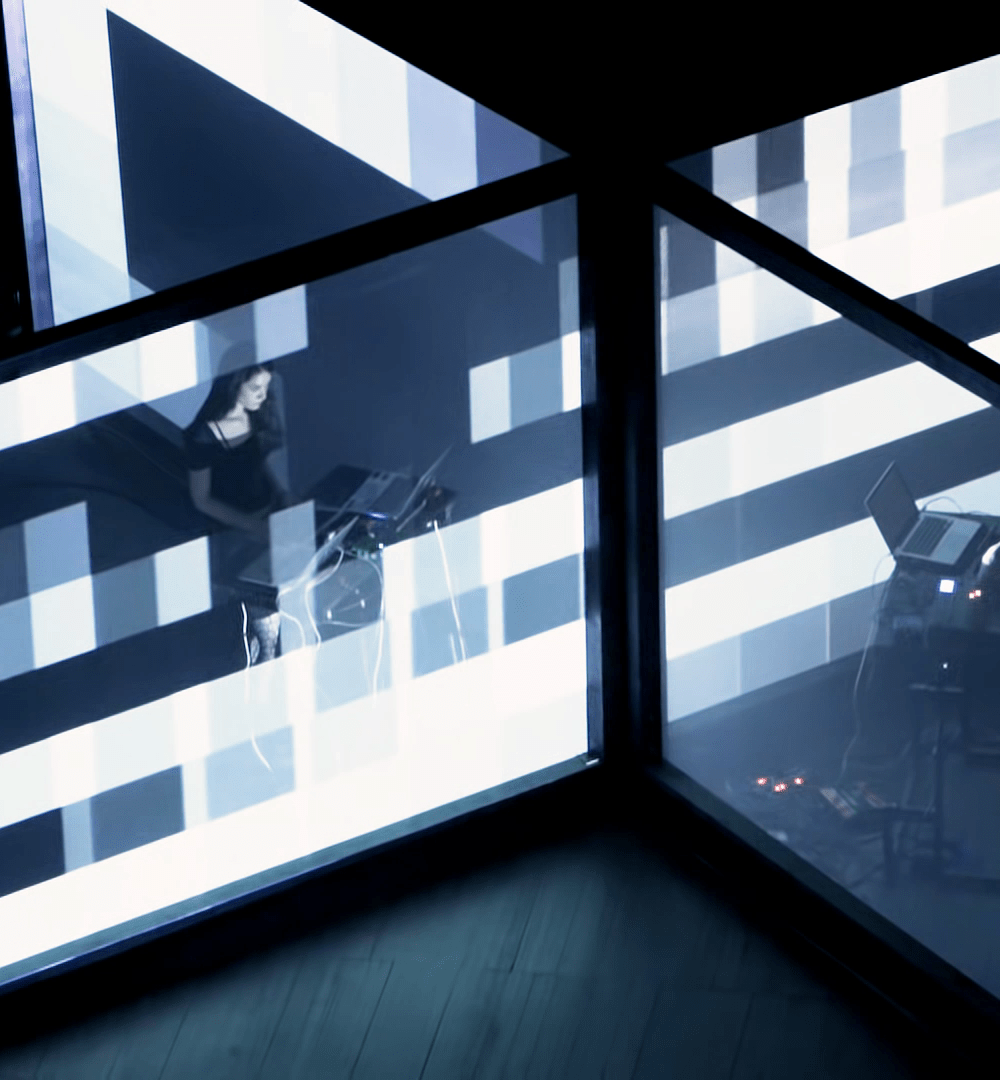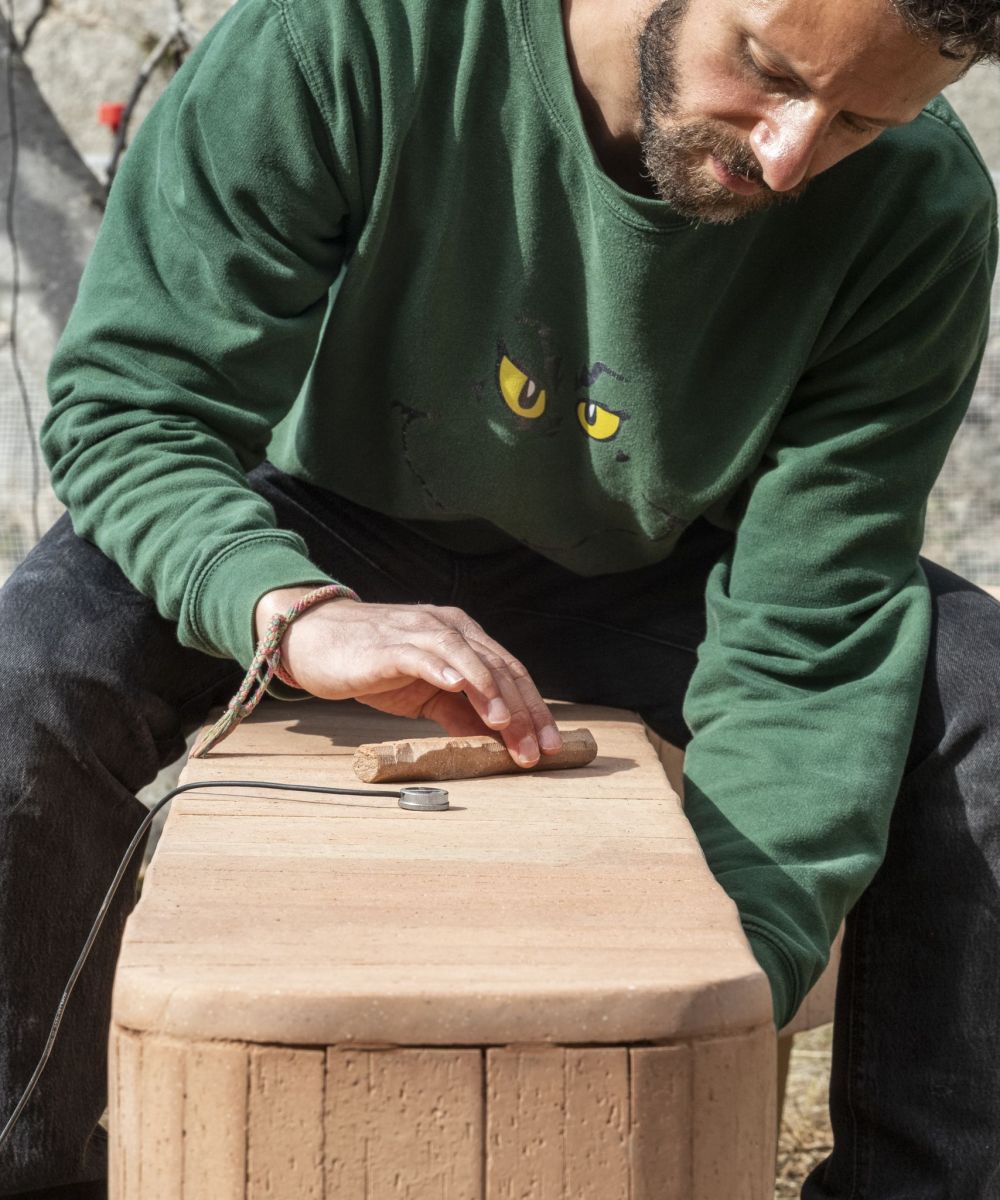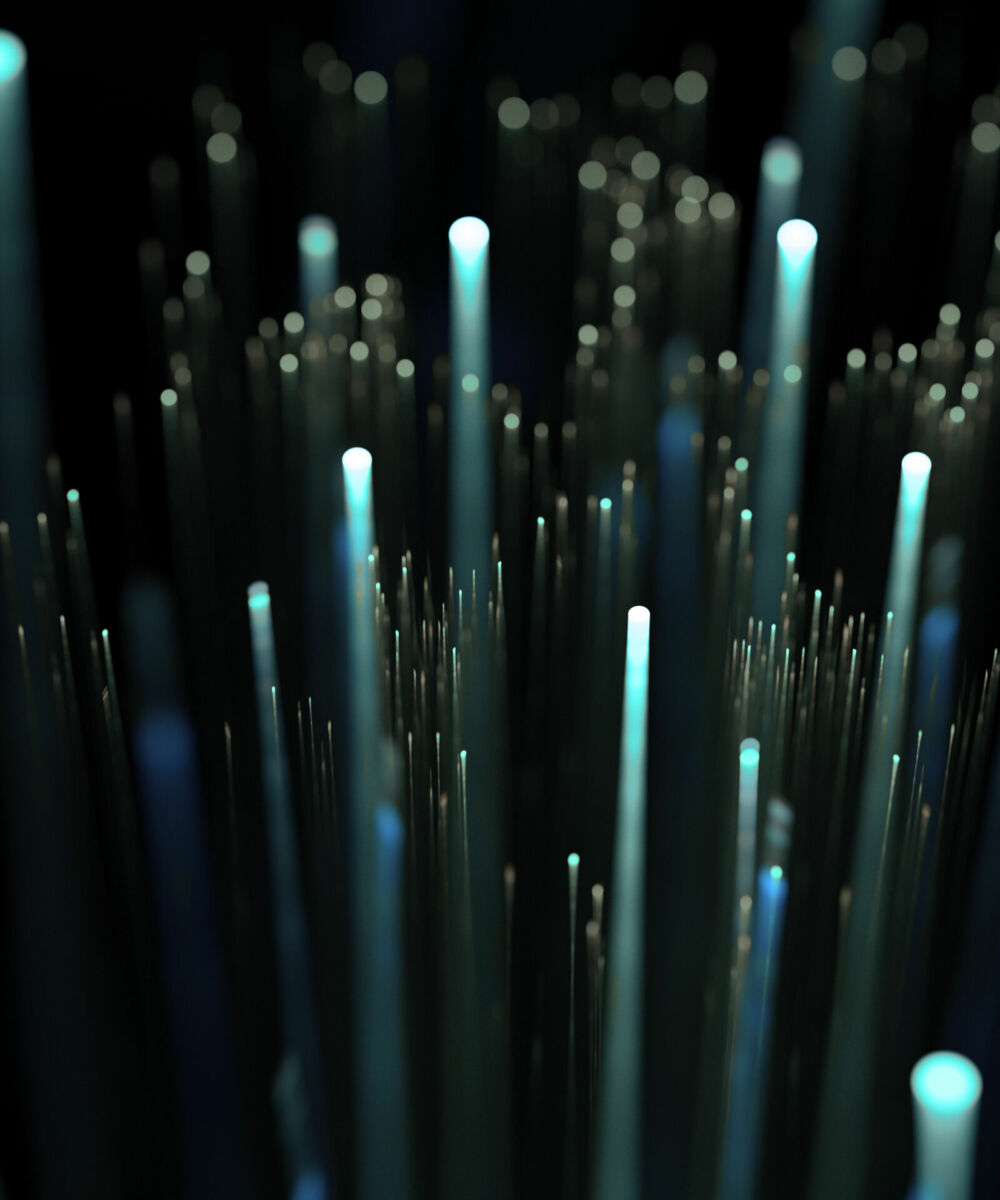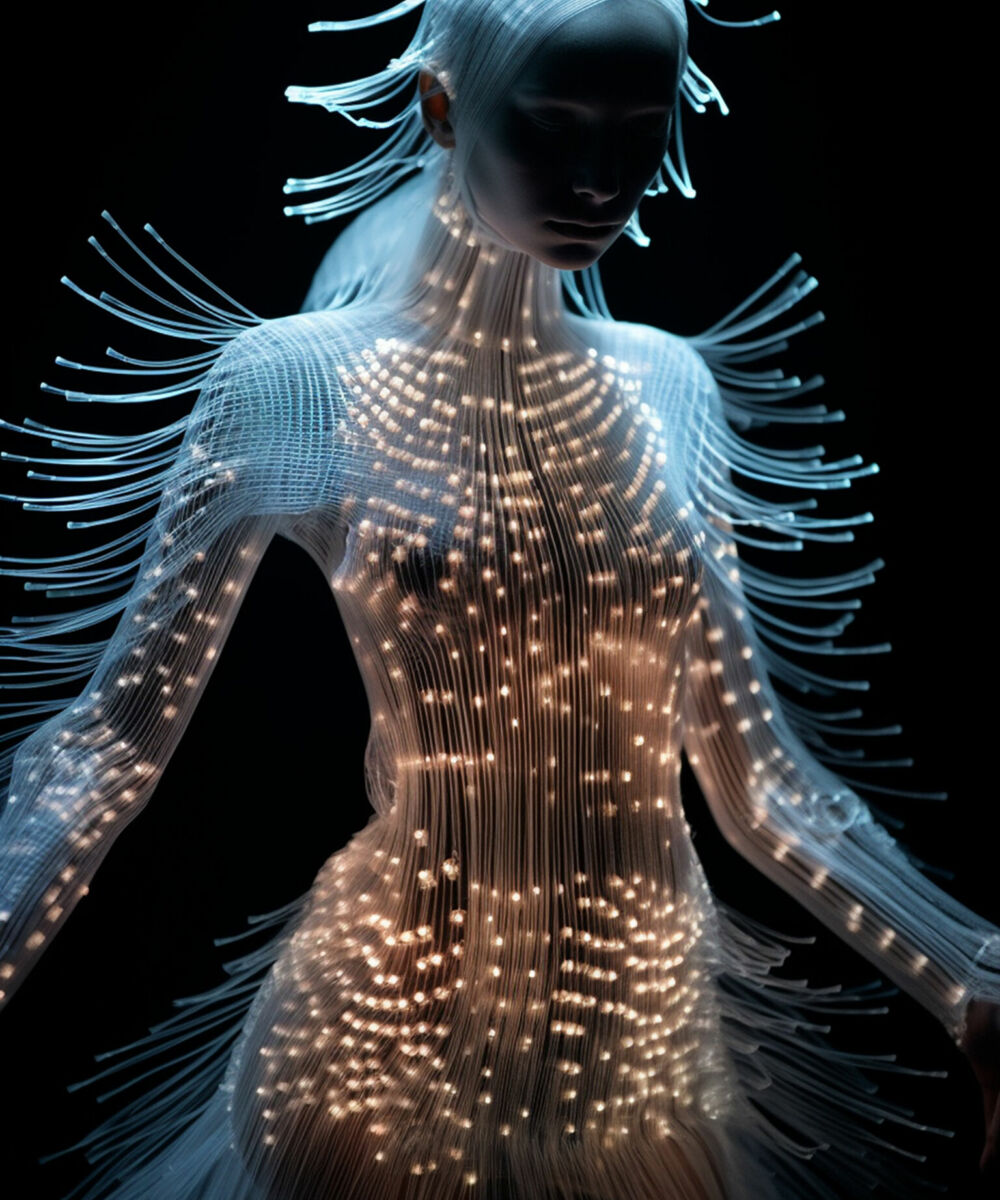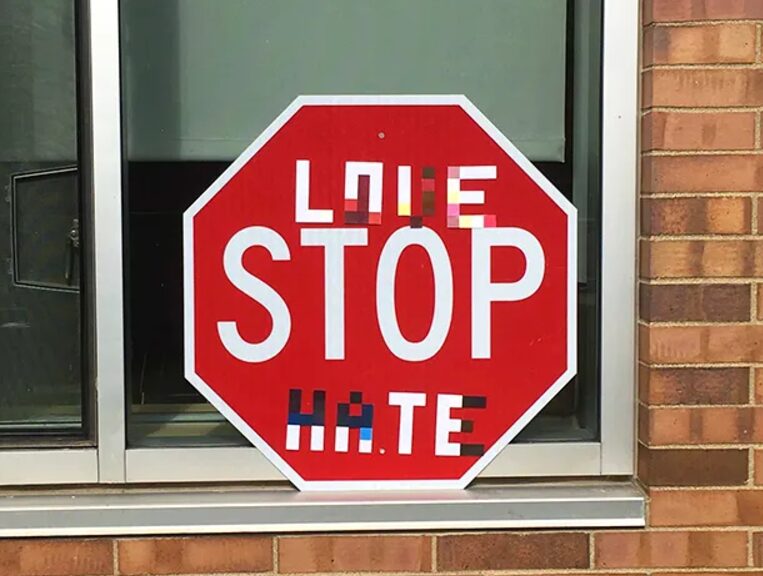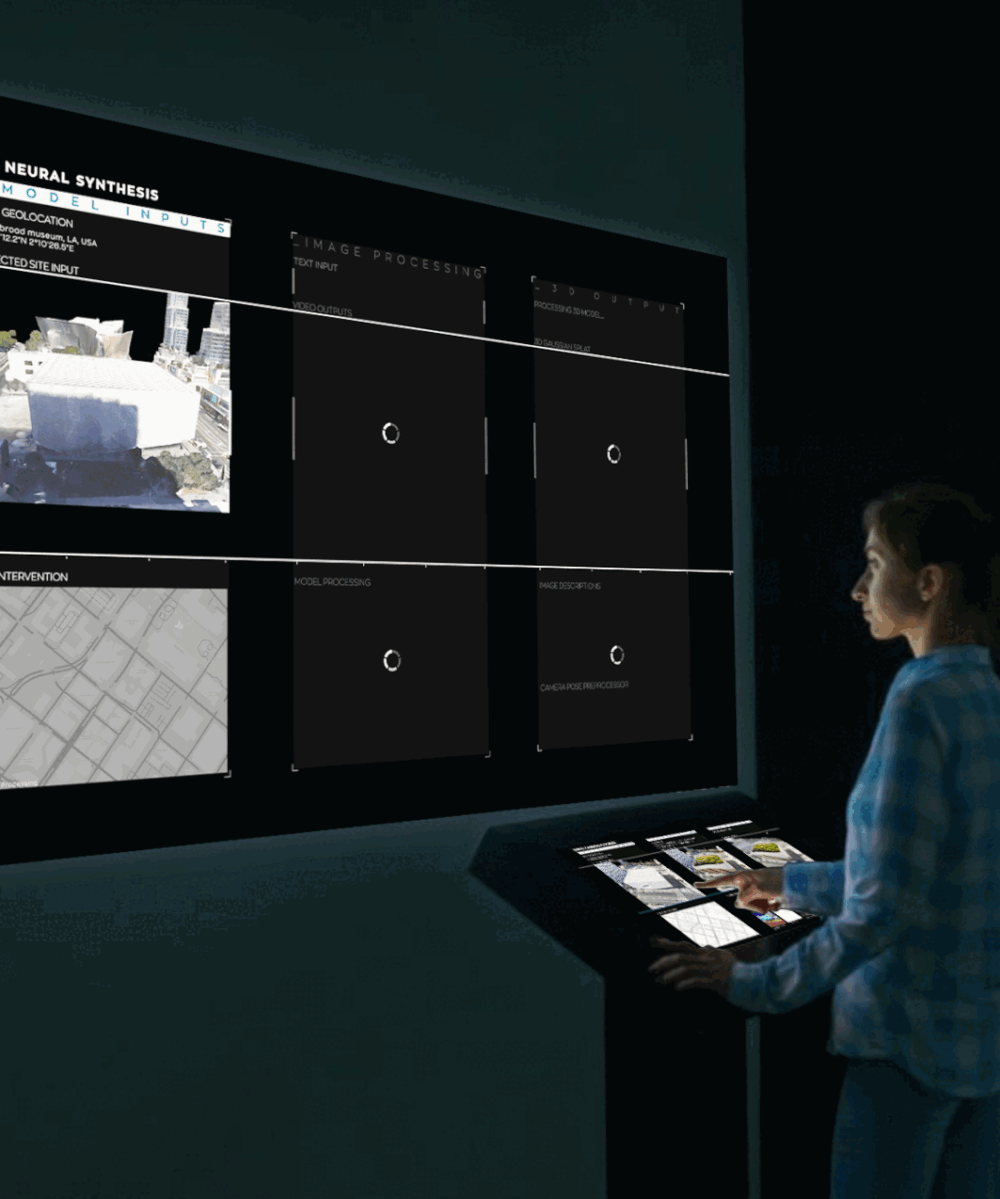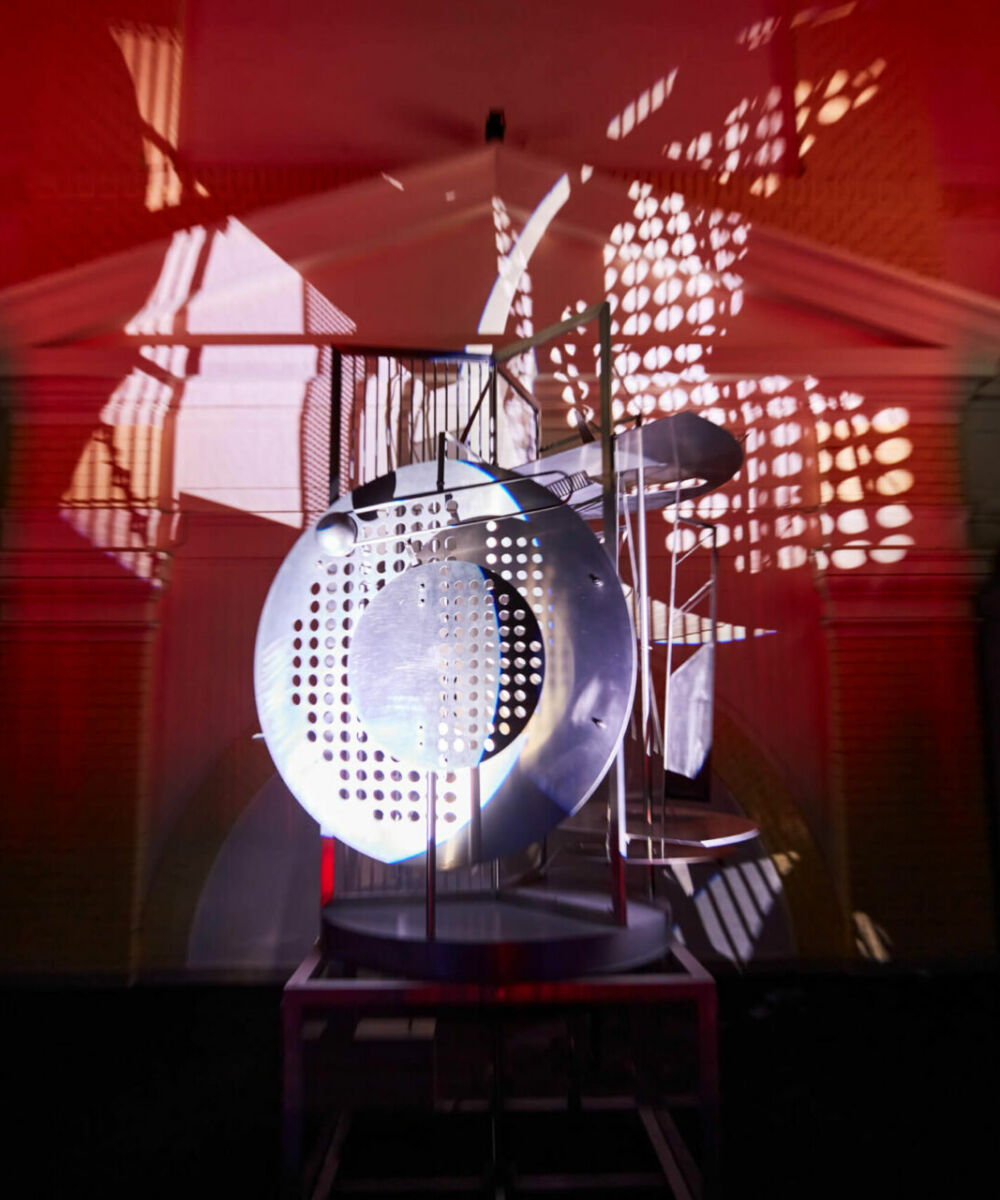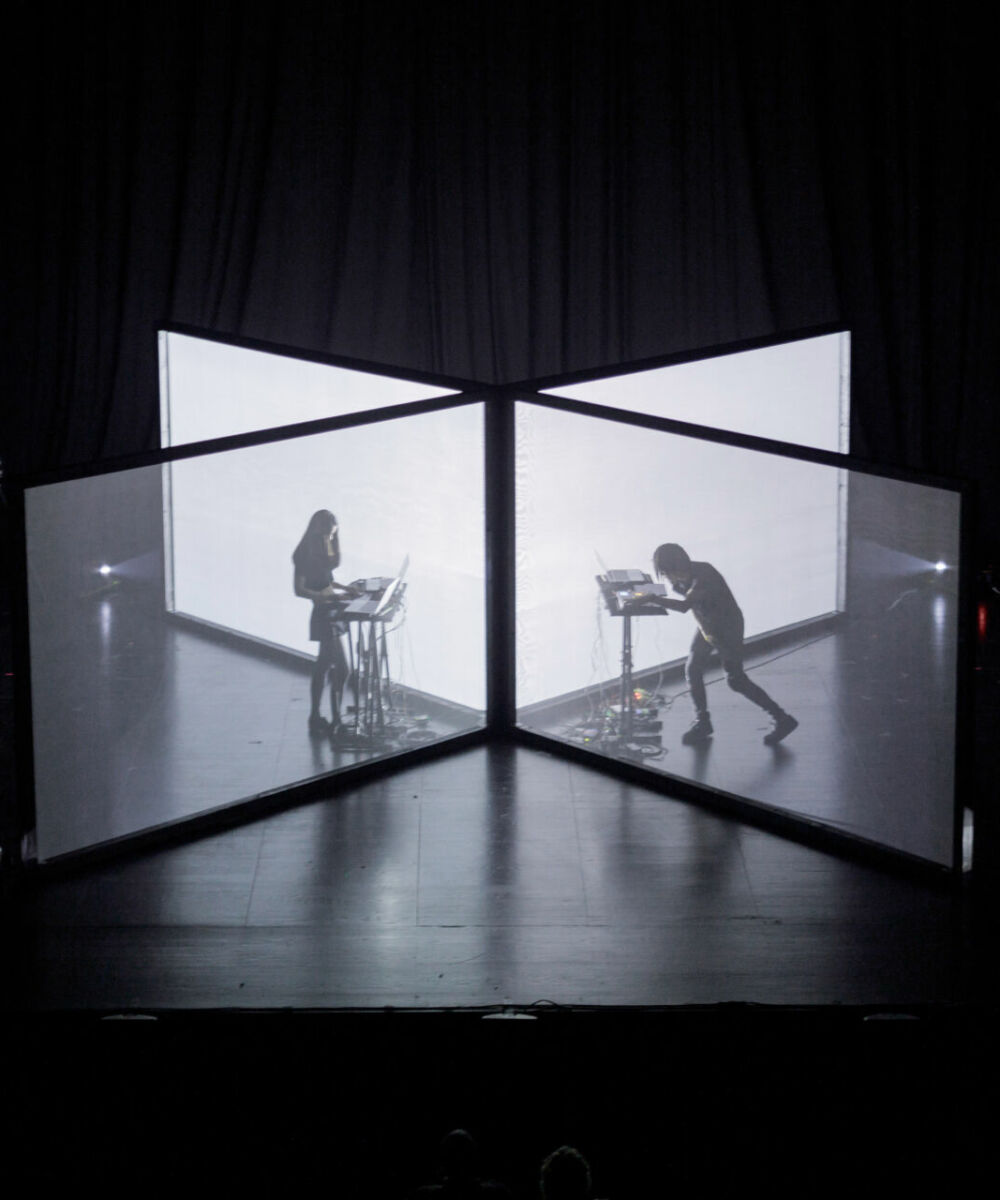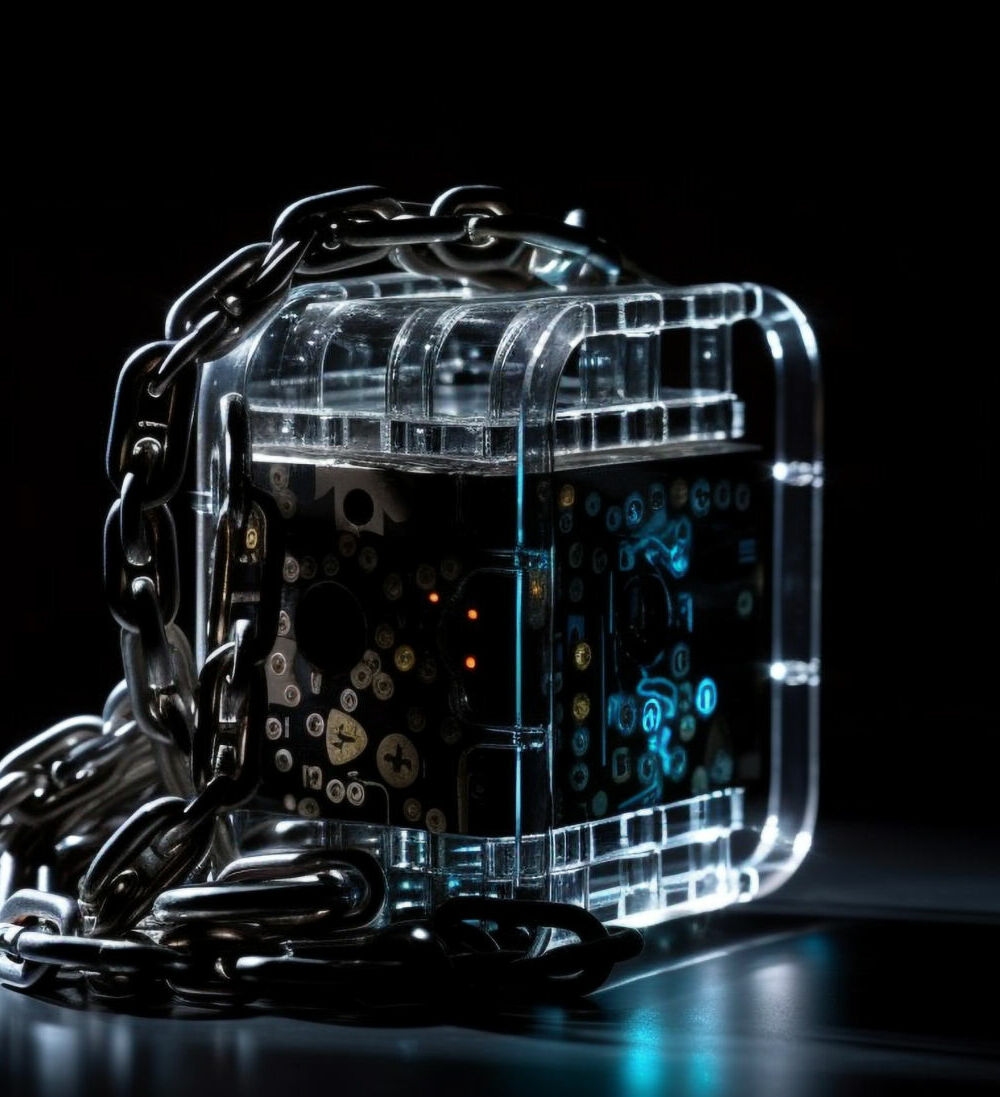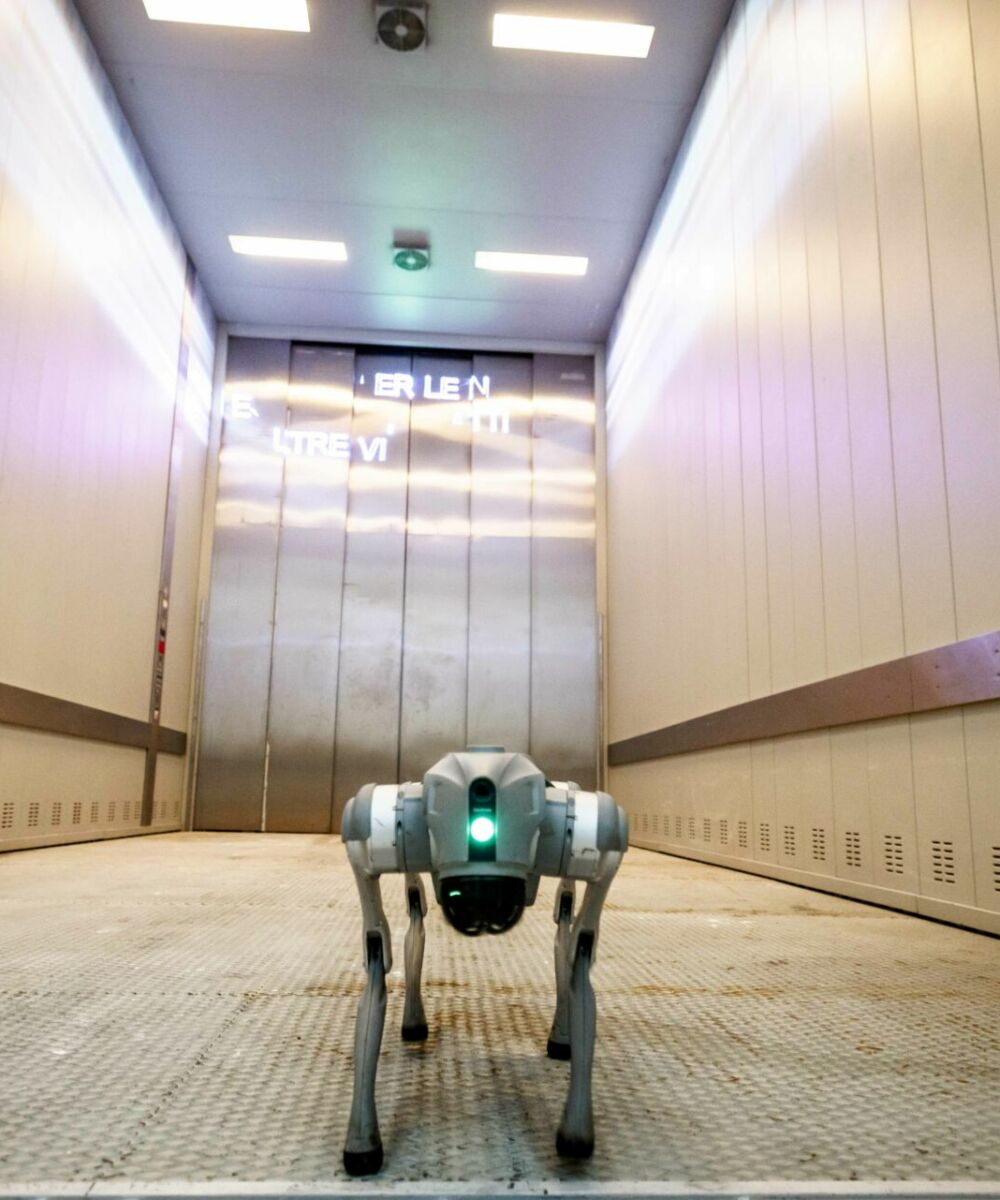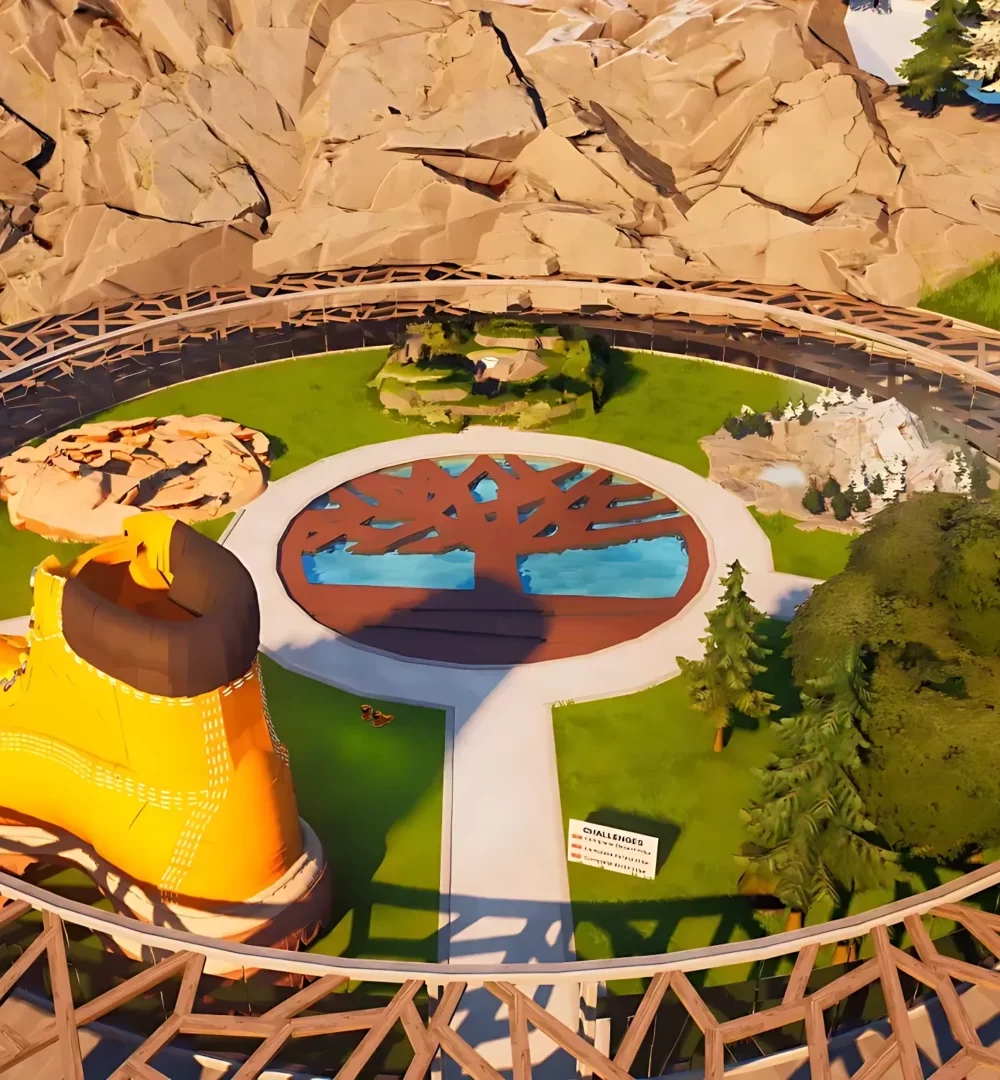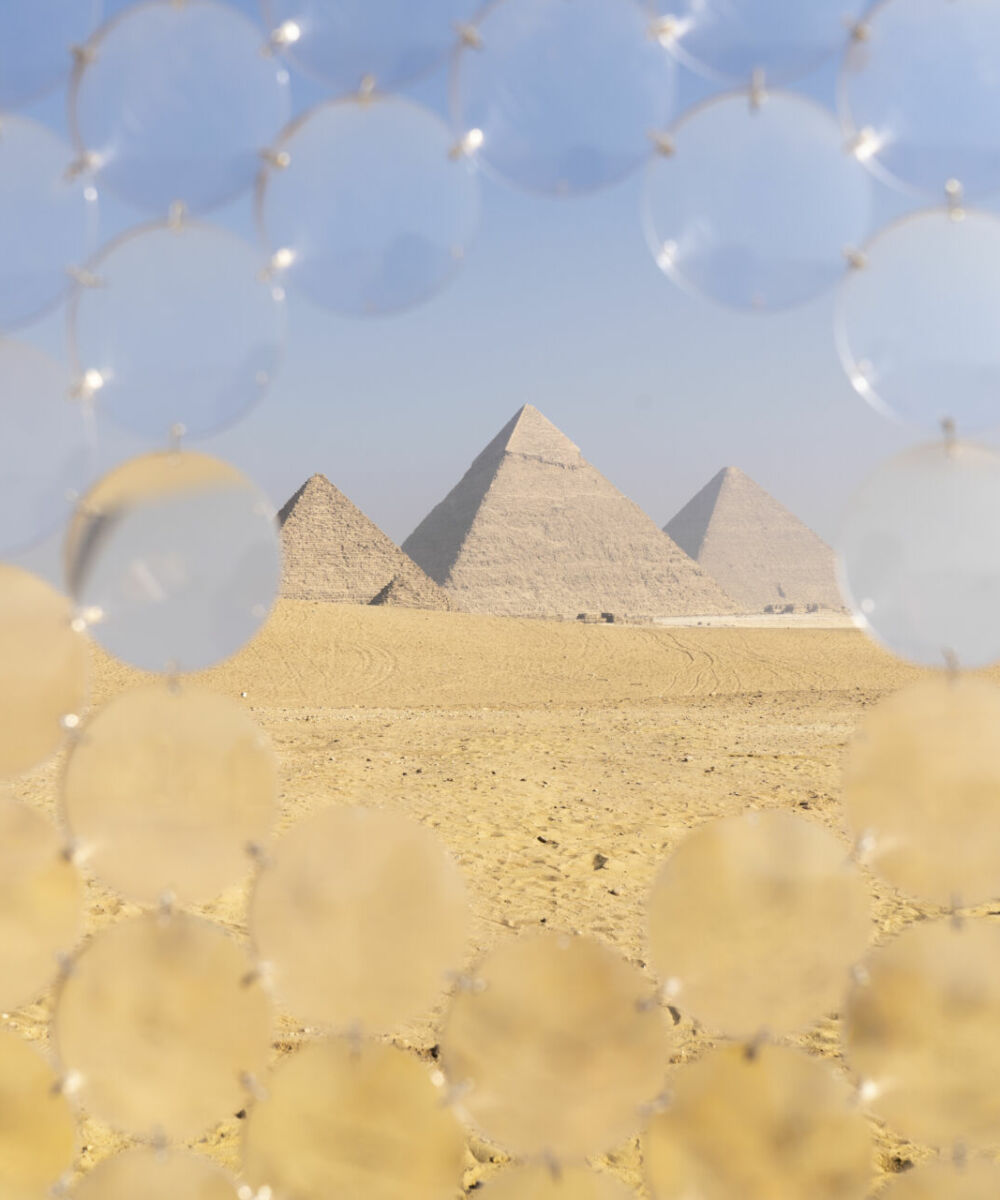Light as a Universal Language: the Art of Federica Di Carlo lands in Giza
by Alessandro Mancini
Federica Di Carlo, renowned and attested artist on the Italian and international art scene, returns to amaze the public with an ambitious and visionary work to be shown at the UNESCO world heritage site among the iconic Cheops, Chefren and Menkaure pyramids on the legendary Giza plateau.
During the fourth edition of the international contemporary art exhibition,Forever Is Now, to be held from October 24 to November 16 in Egypt, Di Carlo, the only Italian female artist selected for the exhibition, will show I See, I See: a monumental site-specific installation that combines science, myth, and phenomenology, offering visitors a new way to observe and understand the world through the lens of optical physics.
The work, I See, I See, is inspired by the eye symbol in Egyptian mythology, in which humanity was said to have been born from the tears of the Sun God, Ra. Di Carlo used this legend as the starting point to develop an optical device that transforms the visual experience of the viewer, creating a new perspective of the pyramid landscape.
The environmental installation, 2 metres high and 7.5 metres wide, emerges like a gigantic eye, with a ‘pupil’ composed of about 2000 optical lenses that reflect the surrounding landscape, particularly the pyramids and the light of the desert, in a continuous visual metamorphosis.
Di Carlo explains that her work “challenges the confines of traditional perception, and the decision to place it in front of the pyramids was especially risky, but also very stimulating”. Passing in front of I See, I See – the viewer interacts with the landscape in a completely new way and can admire the surprising effect of the lenses that reflect the pyramids thousands of times in a dance of light that changes as the sun travels, above all, at dawn and sunset. “According to the position of the sun, viewers can see up to two thousand suns reflected in a single lens”, says Di Carlo, explaining how the interaction with light and natural elements is at the core of her artistic research. Even the title of the work (which is actually one of a series), I See, I See, is a play on words: see, meaning to observe and also to understand; it refers to the importance of observation as the source of knowledge or awareness. “Sight is an expanded sense that we have repressed”, explains Di Carlo, “this why, with my environmental installations, I offer viewers the possibility to be involved in an experience, and to use their senses, sight first of all, which is the first instrument that we developed completely and that has allowed us to look, discover, and achieve everything”. In fact, through her work, the artist aims to reawaken this fundamental, basic sense, inviting viewers to see the world with new eyes and, through lenses and the light, to discover connections that often elude normal perception.
Federica Di Carlo’s approach to art is based on a constant dialogue among different disciplines: physics, science, mythology, and art. She discovered a passion for physics when she was very young and decided to combine her scientific curiosity with artistic expression. “I always mix science, mythology, nature, and mankind” she comments, “and I feel it is a mistake to consider these aspects as separate worlds because everything is connected. In the past, artists and scientists did not have clearly distinct roles…if we consider someone like Leonardo da Vinci, he is the symbol of this type of fusion. Or the Royal Academy in London, which was founded as an academy of arts and science. Although it was divided between artists and scientists, both groups would meet and dine together to share and cross-pollinate their ideas. The same thing happens today at MIT, for example”.
Di Carlo studied at different art academies, also studying physics in Barcelona and, although she did not complete a degree, she has continued to collaborate with scientists and physicists in renowned international institutes like MIT, l’ESO, INAF and CERN, integrating her scientific knowledge into her works.
“I was lucky because, having grown up surrounded by scientists, I was able to observe their experiments and work with my own eyes”, she comments, saying that this immersion in scientific education had a strong influence on her art. One emblematic example was an experience at the Astrophysics Observatory in the Canary Islands, where she spent some time living inside a telescope for a project curated by the Italian Council. “I slept and even ate inside it” she says, describing this experience as a unique moment of connection between technology, science and nature.
The connection between art and science is a recurring theme in the career of the artist, who has always sought to challenge the limits and potentiality of technology. “Limits do exist, even though today they are a lot less visible. Technology cannot achieve everything, while art can offer a deeper vision of complex questions, weaving together emotive and sensorial dimensions with conceptual reflection”. In fact, for Di Carlo, art is not only a means for exploring the visible world, but also for describing complex physical phenomena, like the death and rebirth of a star, through poetic language that involves the senses.
art is not only a means for exploring the visible world, but also for describing complex physical phenomena, like the death and rebirth of a star, through poetic language that involves the senses
I See, I See is a perfect example of this concept, a work that is not limited to simply representing an aesthetic object, but which becomes an immersive experience where viewers are invited to participate actively with all their senses. Interaction with the work is not only visual, but also symbolic, since it aims at stimulating deep reflection on our relationship with the universe and our capacity to understand the world that surrounds us. The Forever Is Now exhibition represents an ideal context for presenting this work by Di Carlo, thanks to her ability to create a dialogue between international artists and one of the most iconic world heritage sites, the Giza Plateau. Curated by Nadine Abdel Ghaffar, the founder of Art D’Égypte, this exhibition aims at promoting the rich Egyptian cultural heritage, creating a bridge between tradition and innovation. Federica Di Carlo’s participation at this prestigious event does not only shine a light on the quality of contemporary Italian art, but also demonstrates the significance of the dialogue between art and science in a global context. “When I was considering my submission,” the artist says,”I had to adapt it to the space and historical period of the location. So I created a project that respected the space and culture of the site.
In the end, I believe that art can become a vehicle to create a dialogue among different populations and to facilitate cross-pollination, not only between art and science, but also often between different cultures and communities”. At a time in which technology seems to dominate every aspect of our daily lives, I See, I See invites us to rediscover the wonders of vision and to look at the world with new eyes, aware of the fact that observation is not simply a passive action, but a form of active and transformational understanding.
Alessandro Mancini
Graduates in Publishing and Writing from La Sapienza University in Rome, he is a freelance journalist, content creator and social media manager. Between 2018 and 2020, he was editorial director of the online magazine he founded in 2016, Artwave.it, specialising in contemporary art and culture. He writes and speaks mainly about contemporary art, labour, inequality and social rights.


